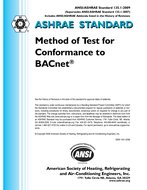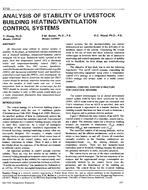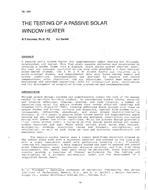Click here to purchase
This paper provides an overview of the pilot phase of afield study to determine the feasibility of a method of directlymeasuring the waste of water and energy caused by currenthot-water distribution systems (HWDS) in California residencesusing wireless sensor network technologies. Theexperience gained in the pilot phase study using wirelesssensor networks demonstrates that it is clearly feasible to usethis technology for measuring water and gas flows andtemperatures.
The goal was to demonstrate a method to reliably collectwater flow and temperature data from every indoor hot waterend-use point and at the water heater in one-second intervalswhen water was flowing. The overall success of the pilotphase study indicates that this technique can work. However,the pilot phase study did reveal shortcomings in many areas.The recommendations in this paper address those shortcomingsand provide ways to improve the outcomes of any followonfield study. The project’s tasks were to test and evaluatethe proposed hardware, installation protocols, data collection,and processing procedures. The techniques developed inthis project provide a way to accurately measure temperatureand flow of indoor water use events at one-second resolution.The technologies used in this pilot phase study are viable foruse in a larger field study to determine the energy and waterefficiency of hot-water distribution systems in Californiahomes. The lessons learned from this experience will improveprocedures, programming, and wireless sensor networkspecifications.
Citation: ASHRAE Transactions, Volume 117, Part 1, Las Vegas, NV
Product Details
- Published:
- 2011
- Number of Pages:
- 14
- File Size:
- 1 file , 3.3 MB
- Product Code(s):
- D-LV-11-009


